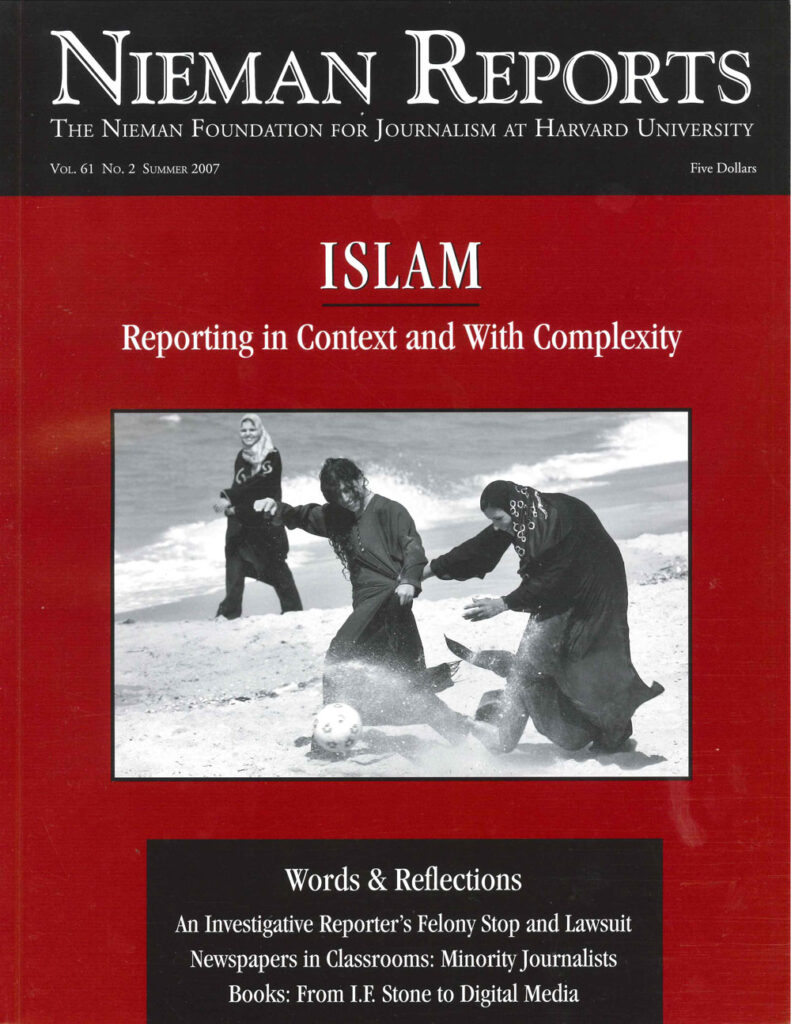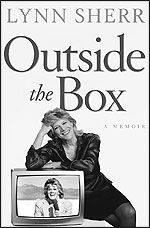I don't think I've ever met Lynn Sherr, but our experiences in journalism—she in television for much of her career, I in print—are so similar that as I read her book, "Outside the Box: A Memoir," I felt I could finish her sentences.
For us, as women of a certain age, as the phrase used to go, vast social change was unfolding as we reported on the beginnings of the contemporary women's movement. I feel sure that Sherr would relate, for example, to the frustration of writing about consciousness-raising groups in the late 1960's when I attempted to explain their significance to male editors who didn't see what was happening around them. It was like trying to nail Jello to the wall. Politics, on the other hand, was something the guys understood, so many of us started covering women's political efforts. Sherr remembers well the adrenaline surge at the 1984 Democratic convention in San Francisco when the party named Geraldine Ferraro as the first woman on a national ticket.
Along with jaw-dropping moments ("Did he just say what I think he said?"), when phrases were filled with what today is unimaginable sexism, we persevered through a lot of other memorable, if not iconic, utterances.
- We heard the "but we've already got a woman" line more often than we care to recall.
- We finally, I think, erased "newshen" from the vocabularies of headline writers and others who inhabit newsrooms.
- Seated in a restaurant, bar or hotel lobby with several other women, we've been asked by too many men to count what we are doing there "all by ourselves."
- We watched as men turned contortionists to try to figure out what a group of women reporters was saying at a nearby table. Or when we closed the office door, we gave men fits wondering what we could be talking about.
Those are the lighter moments. We know all too well of times we didn't get jobs, pay raises, or choice assignments because of our gender. Despite the fine journalism done by Dorothy Thompson and Marguerite Higgins before and during earlier wars, only a few women were assigned to cover Vietnam. Women correspondents and photographers rarely made it into combat zones until the 1990 Gulf War. And women sportswriters experienced inequality in assignments from their news desks and unequal treatment when it came to interviewing athletes in their locker rooms.
There came a time when women journalists refused to put up with such treatment, and they sued The New York Times, The Associated Press (AP), and NBC and filed equal employment charges against The Washington Post. They also challenged sports organizations such as Major League Baseball in court and filed license challenges against network TV affiliates to start achieving change for women.
Women journalists today stand on the shoulders of those gutsy women who challenged the status quo, and we should not forget this all-too-recent era in our history. "Part of me," Sherr writes, "thinks it's wonderful that so many young women don't really understand the struggle it took to get here. It's good because they're not hung up on it; it's not a problem. They just do their jobs. But part of me says they really ought to know, because it can slide away again very easily."
As Sherr has done herself in this and other books, we need to continue to write women's history, especially the history of our profession, so that young women starting out will know about Betsy Wade and Joan Cook and Eileen Shanahan, plaintiffs in The New York Times case, and Pauline Fredericks and Nancy Dickerson, pioneers in the men's world of television.
Changes in News Reporting
Like the newspaper world that I have loved, TV news is suffering from contractions. No longer do Americans gather around the electronic hearth to hear Walter or Dan or Tom or Peter or even Katie, Charles or Brian give us the evening news. News is always on and accessible online, though what our neighbor might be seeing or hearing can be quite different than what we are taking in as the day's news. Fewer Americans each year still haul in the morning newspaper, while newspapers' online stories with audio, video and interactive opportunities for feedback are ubiquitous.
Sherr traces the changes for television as she looks back on her own career. She started with the AP in New York in 1965, and for three years wrote and produced educational sound filmstrips. (I started with United Press International in Chicago in 1964 and for three years wrote broadcast news.) After a stint on AP's team of young reporters covering the women's movement and youth culture, she moved to local reporting at WCBS in New York, then to stints at WNET, New York's public television station, and with Bill Moyers' PBS program "USA: People and Politics" in 1976. She went to ABC News in 1977, where she covered primarily the space program and national politics. For the past 20 years, she's been a mainstay of ABC's news magazine show "20/20."
Like newspapers, television news still resided in "fat city" in the mid-1980's. Reporting on the Ferraro campaign, Sherr recalls, "We traveled in network luxury in those days of open wallets and full coverage." Later, working for "20/20," she did longer stories and in-depth profiles and discovered that she had "a chance to make a difference with a devoted audience." It is, she writes, "the best place to work in all of ABC." But as the years went by, the audience split as cable TV and other delivery systems—notably the Internet—came along. Budgets tightened. Stories shortened. Worse, print and TV grew more interested in covering celebrities than in reporting the news.
To these deteriorating factors, Sherr adds that "today facts have become fungible. People seem more interested in reading or hearing or watching to reinforce their already set positions rather than to open a new world of possibilities.... Our job is not to reinforce what you already know; it's to find out what matters and report back to you on that. Fairly."
Sherr's book could—and probably should—double as an instruction manual for young journalists, especially now that they are being asked to report, write, blog and produce stills and video, often simultaneously. Sherr emphasizes and illustrates the value of good preparation in tackling any assignment. But even that effort by a reporter doesn't take into account "how easy it is to miss the best bite because you haven't heard the new thought dropped into an answer and because you've just sprinted on to the next question without following up."
Reading this admonition, I recalled an interview I did with Whole Earth Catalog editor Stewart Brand for the Los Angeles Times. We were talking about how people experiment when they come to California, when he mentioned Charles Manson and Dan White, killers both. Only when I listened to the tape of our conversation did I hear myself asking him a totally unrelated question after he'd said this. In this case, I could call him to have a second chance, and I did.
"Surely you don't mean Manson and White were good examples of experimentation?" I asked Brand, who assured me he didn't. But this moment is a good reminder that what Sherr cautions reporters about does happen.
Her life outside of journalism offers insight into her personal triumphs and challenges. Sherr married happily and then lost her husband to cancer. She fought colon cancer. Her parents died. Through it all, she seems to have maintained a healthy sense of perspective on what matters—family, friends and pride in one's work. I think I'd like the person I met on these pages. And I'd like her not only because our experiences are woven together in the quilt of time in which we practiced our trade, but because of how she approached the difficulties those times presented to women like her and how she is now sharing with the next generation what she learned along the way.
Kay Mills, a former Los Angeles Times editorial writer, is author of "A Place in the News: From the Women's Pages to the Front Page," and other books.




